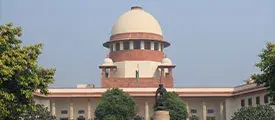Voluntary Liquidation under IBC
In India, Voluntary Liquidation or Voluntary Winding up of a company is administered under Insolvency and Bankruptcy Code, 2016 (hereinafter referred to as the “Code”). The main objective of the Code is to discontinue the operations of the company and distribute its assets while also paying its debts to its Creditors. Only those Corporate Debtors who intends to liquidate itself and has not committed any default shall be able to initiate such proceedings under the Code.
What is Voluntary Liquidation?
Voluntary liquidation in simple words, is liquidation of an entity by its own members. Voluntary liquidation may be chosen for several reasons like when the entity has been created for a specific reason and the same has been fulfilled; or where the articles of association provide that the entity shall be liquidated on occurrence of an event and the event has occurred; or where the entity is unable to carry on its business.
Process of Voluntary Liquidation
- Initiate the liquidation process
Where a corporate debtor is a company, then the majority of directors shall be eligible to initiate voluntary liquidation proceedings[1]. Where a Corporate Person, other than a company, intends to liquidate itself voluntarily[2], a majority of the- (a) Designated partners, if limited liability partnership, or (b) Persons responsible for exercising its corporate powers, if not a company or a limited liability partnership shall be eligible to initiate voluntary liquidation proceedings.
- Declaration
The liquidation process shall be initiated by the corporate debtor via a declaration by an affidavit stating that:
- The company is not being liquidated for defrauding any person
- The company has no debt
- The company will be able to pay its entire debt from the proceeds of assets that will be sold in the voluntary liquidation.
This declaration shall be accompanied bylatest two years audited financial statements or for a period since incorporation as the case may be and report of valuation of assets, if prepared by a registered valuer.
- Convene Board Meeting
The meeting of Board of Directors shall be convened for the following:
- Approve the Voluntary Liquidation decision
- Appoint a Insolvency Professional as the liquidator
- Issue a notice for General Meeting to be conducted on a specific date, day and time and, shall specify the proposed resolution
- Convene General Meeting
Within 4 weeks from the Board Meeting, convene a general meeting to pass the following:
- special resolution forliquidating the company voluntarily or an ordinary resolution for liquidating as a result of expiry of any fixed period of its existence in articles
- Resolution appointing Liquidator of the company
If the Corporate debtor has any debt, then 2/3 of the creditors shall approve the resolution.
- Public announcement
The liquidator shall make Public Announcement in FORM A of Schedule I of Insolvency and Bankruptcy Board of India (Voluntary Liquidation Process) Regulations, 2017, within 5 days of his appointment, calling all the Creditors of a Corporate Debtor to submit their claims within 30 days from the liquidation commencement date. It shall be published in the Official Gazette, one English and one Regional language newspaper, on the website of Corporate Person and at IBBI Website (public.ann@ibbi.gov.in)[3].
- Submit documents to ROC and IBBI
The Liquidator shall intimate about the resolution passed for voluntary liquidation of the company to IBBI and Registrar of Companies, within 7 days of such resolution.
- Claims to made to the Liquidator
All claims to the liquidator shall be made as specified under the Insolvency and Bankruptcy Board of India (Liquidation Process) Regulations, 2017:
| Type of Creditor | Mode of filing claim |
| Operational creditor except workmen and employees | Form B of the Regulations |
| Financial creditor | Form C of the Regulations |
| Workmen or employee | Form D of the Regulations |
| Any other stakeholder | Form F of the Regulations |
- NOC from Tax Authorities
Income Tax Department shall be intimated within one month of passing resolution regarding Voluntary Winding up of the Company and to obtain NOC from the Income Tax Department for the same.
- Opening of bank account
The liquidator shall open a bank account in the name of Corporate Person followed by the words ‘In voluntary liquidation’ in a Scheduled Bank, for the receipt of all moneys due to the Corporate Person[4].
Preliminary Report
Within 45 days from commencement of the liquidation, submission of preliminary report will be done by the liquidator detailing[5]:
- Capital structure of the corporate debtor
- Estimates of the assets and liabilities
- The proposed plan of action for carrying out the liquidation.
- Verification of claims and preparing a list of stakeholders
The Liquidator shall verify the claims submitted to him and may either admit or reject the claim, in whole or in part[6]. The Liquidator shall prepare a list of the Creditors within 45 days from the last date for receipt of claims along with:
· Amount of Claim admitted
· Extent of Debts-Secured or Unsecured
· Details of Stakeholders
Realization of Assets
The liquidator shall endeavor to recover and realize all assets and dues of the Corporate Person in a time bound manner for maximization of value for the stake holders and the monetary receipts from the same shall be deposited in the bank account opened for this purpose[7].
Distribution of proceeds
The liquidator after realization of assets shall distribute the proceeds within six months from the receipt of the amount to the creditors. In the event any asset cannot be distributed between the creditors due to its nature or other circumstances, liquidator may distribute it as such with the approval from the entity. The liquidation costs shall be deducted before such distribution is made to the creditors.[8]
Completion of Liquidation process
The liquidator shall try complete the liquidation process within 12 months from liquidation commencement date. If the process is not concluded within 12 months, the liquidator shall hold a meeting within 15 days from the end of 12 months and shall present an Annual Status Report.
Final Report
Submission of Final Report by the Liquidator to be submitted to ROC, IBBI and NCLT, containing the following:
- audited accounts of the liquidation
- a statement showing the assets are disposed, debts are discharged and no litigation is pending
- a sale statement of assets showing realized value, its cost, manner and mode of sale, any shortfall, to whom it is sold etc.
- Order of Dissolution
Application to NCLT has to be moved by the liquidator along with Final Report for the dissolution of a Corporate Debtor. NCLT shall pass an order and the Corporate Person shall be dissolved from the date of such order. Within 14 days from such order, a copy of the order shall be forwarded to the authority with which the Corporate Person is registered.
Conclusion
The process of Voluntary Liquidation means liquidation of a company with the approval of its own members and a company usually opts this when its members decide not to continue its business operations. Prior to the Code, liquidation process was governed by the Companies Act, 2013. However, we witness that Section 59 of the Code expedites the whole process by removing the ambiguities and bringing a timeline to the whole process.
[1] Section 59 of Insolvency and Bankruptcy Code, 2016
[2] Rule 3 of the Insolvency and Bankruptcy Board of India (Voluntary Liquidation) Regulations, 2017.
[3] Rule 14 of the Insolvency and Bankruptcy Board of India (Voluntary Liquidation) Regulations, 2017.
[4] Rule 34 of the Insolvency and Bankruptcy Board of India (Voluntary Liquidation) Regulations, 2017
[5] Rule 9 of the Insolvency and Bankruptcy Board of India (Voluntary Liquidation) Regulations, 2017.
[6] Section 39 and 40 of Insolvency and Bankruptcy Code, 2016
[7] Rule 33 of the Insolvency and Bankruptcy Board of India (Voluntary Liquidation) Regulations, 2017.
[8] Rule 35 of the Insolvency and Bankruptcy Board of India (Voluntary Liquidation) Regulations, 2017.








